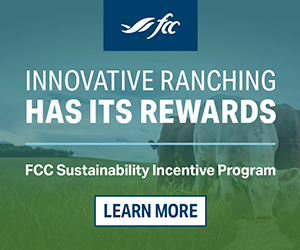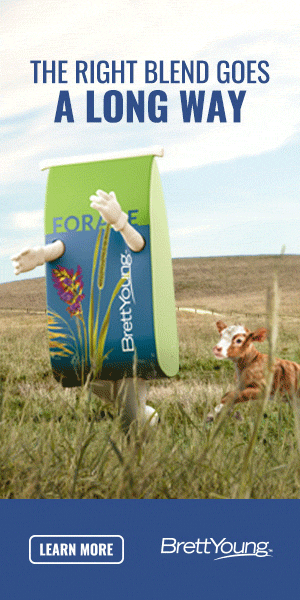AB Direct - Steers
Rail: 500.00 del
AB Direct - Heifers
Rail: 500.00 del
US Trade- Steers
Rail: 360.00-365.00 (IA,NE)
US Trade - Heifers
Rail: 360.00-365.00 (IA, NE)
Canadian Dollar
0.18

Frequently Asked Questions: Prescribing and dispensing livestock medications
Since December 1, 2018, a prescription has been required to purchase any medically important antibiotic for use in cattle. This meant that some medications, such as tetracycline, were no longer available over the counter at local farm supply stores. As with any new regulation change, this has caused some confusion in various situations for producers. You’ve got questions? We’re answering them!
What is a medically important antibiotic?
These are drugs considered to be essential for the treatment of bacterial infections in humans and include most antibiotics used to treat animals. Ionophores such as Rumensin are not considered to be medically important.
How do I get a prescription?
Only a registered veterinarian associated with a veterinary practice in Alberta can issue a prescription. Before your veterinarian will write you a prescription, you need to first make sure a valid veterinary-client-patient relationship (VCPR) is in place.
What is a VCPR?
Essentially, this means that you have a relationship with your veterinarian, and they understand your operation, management practices, herd, and common animal health issues you experience well enough to provide meaningful advice and oversight.
In Alberta, the following conditions must be met to establish a VCPR:
- The veterinarian has assumed responsibility for making clinical assessments and recommendations for the health of your animals, and you have agreed to the veterinarian assuming this responsibility
- The veterinarian has sufficient knowledge of the animals on which to base their assessment, diagnosis, and treatment of the animals’ medical condition
- You have agreed to follow the veterinarian’s recommendations and prescriptions
- The veterinarian is available or has arranged for follow-up evaluation, especially in the event of adverse reactions or treatment failure
Do I have to meet with my veterinarian a specific number of times per year to maintain a valid VCPR?
No, but contact with your veterinarian should be regular enough that they feel confident they have sufficient knowledge of your operation and your herd’s health status. Scheduling an annual visit with your veterinarian to discuss your animal health needs is a good idea.
What if there is no veterinarian close to me? Or I don’t get along with the veterinarian that is closest to me?
You can establish a VCPR with any veterinarian licensed to practice in Alberta.
Okay, so how do I get a prescription?
Once the VCPR is established, your veterinarian must determine the medical need for each prescription, document it in the medical record, and be available for follow-up. If these conditions are met, a prescription can be issued. A prescription will be specific to the animals being treated, the particular drug, dosage, duration, directions for use, and any withdrawal time or other precautions or warnings.
Can a prescription be written in advance of a probable animal health issue?
Yes, but there are a few caveats. Based on the veterinarian’s knowledge of your operation and common animal health challenges, you can work with your veterinarian to design one or more animal health protocols. An animal health protocol may anticipate medical treatment needs for predictable animal health events, in which case a prescription may be written to cover an estimated amount of required antibiotic. Prescriptions can be valid for up to one year. It is important to note that the animal health protocol is not the same as a prescription. The animal health protocol can be used to determine medical need for a prescription but cannot be used as a prescription.
Does the veterinarian have to make a farm visit every time I need a prescription?
Provided you have a valid VCPR, the veterinarian may collect information necessary to establish medical need without a visit or examination of animals. Information about a current or emergency animal health issue can be shared by phone, text or email. Pictures, video or lab test results can also help the veterinarian determine medical need or reach a diagnosis.
I have a prescription on file with my veterinarian, but they ran out of stock for the particular antibiotic I need, and I can’t wait for the new order to come in. Can I get this prescription filled elsewhere?
Once your veterinarian has written you a prescription, or it is on file (e.g. for refills), you can ask for a copy of it, and your veterinarian must provide a copy at no charge. You may take a copy of your valid prescription and ask another veterinarian to fill it, even if you don’t have a VCPR with the other veterinarian.
BUT, the other veterinarian does not have to fill that prescription. Whether or not a veterinarian dispenses any medication is a personal business decision. You may want to call ahead to see if that’s a service an unfamiliar veterinarian provides so you don’t waste a trip.
Scenario 1: Joe has been working with his veterinarian for several years and they have developed a herd health protocol together. They have noticed that whenever it is a particularly wet year, cows and calves in one field experience more footrot than the rest of the herd. There has been, on average, 10% of the cows and calves in this field afflicted in those wet years. Joe’s veterinarian writes him a prescription in January, during their usual animal health protocol review, for antibiotics to treat the expected percentage of cows and calves in that field that may get footrot over the summer if it is a wet year. The prescription is written for a specific amount of antibiotic, so if the percentage of animals affected exceeds what has been prescribed, Joe will have to contact his veterinarian to re-assess the protocol and get a new prescription to cover treatment of the extra animals.
Scenario 2: John finishes 250 of his own calves every year. To reduce the prevalence of liver abscesses, he would like a prescription for Tylan. His veterinarian agrees that there is medical need to reduce liver abscesses and writes a prescription for Tylan that provides enough medication to treat 250 head for the finishing feeding period.
Scenario 3: Jen asks her veterinarian for a prescription to cover the medication needs for her 75 head cow herd for the year. Jen’s veterinarian refuses. Why?
This would not be a valid prescription as medical need hasn’t been established, and the request is not specific to the group of animals requiring treatment, the drug, or dosage.
Scenario 4: Jackie has many different locations where her cattle are located, some of which are quite a distance from where she lives and her veterinary clinic where she has a VCPR. She walks into the veterinary clinic that is closest to where she will be processing calves today (not her “home” clinic). She asks for a prescription and is refused. Why?
Jackie does not have a VCPR with this particular clinic, and therefore the veterinarian is unable to write her a prescription.
Scenario 5: Cathy walks into her regular vet clinic, where she has a VCPR and a valid prescription on file. She’s heard that the drug for her prescription is a bit cheaper at the vet clinic the next town over. She asks for, and is given, a copy of her prescription. She calls the vet clinic in the next town and confirms that they have the product in stock. She takes her prescription to the neighbouring clinic and receives her prescribed medication.
Scenario 6: Chris has cattle in many different locations, some of which are a considerable distance from where he lives and his veterinary clinic where he has a VCPR. He has a valid prescription on file with his “home” clinic and asks them to send a copy to the clinic closest to where he’ll be working calves today, and they do so. Chris stops in the new clinic and they fulfill the prescription.
The next day, he makes the same request of a clinic in a different location. Once again, his “home” clinic sends a copy of the valid prescription on file to the clinic closest to where Chris is working cattle, but this time, the clinic doesn’t fill the prescription. Why?
There are a number of reasons why this clinic may choose not to fill that valid prescription. They may not have the drug in stock, they may not actually dispense any medication, or they may simply not want to deal with clients they do not know, even if they come bearing a valid prescription. This is an individual business choice, and Chris could have saved himself a trip by calling and asking the clinic, in advance, if filling his prescription is something they’d do.
Scenario 7: Cam is visiting his brother in another part of Alberta when he realizes he forgot to pick up some medication for a herd health issue on his operation. He’s been working with his local veterinarian for many years, but they haven’t yet had their annual herd health protocol review. Cam figures he’ll just stop by the veterinary clinic closest to his brother’s house and pick up the drugs he needs – perhaps he’ll need this clinic to call his “home” clinic but that should be no big deal. Once there, the veterinarian calls Cam’s “home” clinic, but then refuses to dispense Cam’s medication. Why?
Cam has an excellent VCPR with his “home” clinic, but because they haven’t had their annual herd health protocol review, there isn’t a prescription on file for this particular herd health issue. This means that the vet clinic near Cam’s brother’s house cannot legally dispense any medication to Cam.
This article was first published in Volume 1 Issue 1 of ABP Magazine (February 2021). Watch for more digital content from the magazine on ABP Daily.


